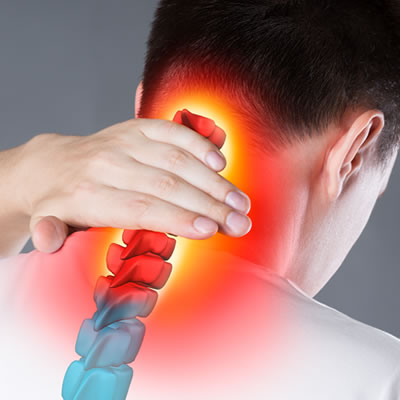Neck Pain Relief
Available at Livermore, Pleasanton, Manteca, Brentwood, San Ramon
 Increasingly prevalent due to technology use, neck pain is unsurprisingly a common issue we see at Alexander Chiropractic and Wellness. The use of digital devices, especially among younger demographics, is the prime culprit causing “tech neck.” This leads to chronic pain in the neck, upper traps, and shoulders, and even joint degeneration at a younger age.
Increasingly prevalent due to technology use, neck pain is unsurprisingly a common issue we see at Alexander Chiropractic and Wellness. The use of digital devices, especially among younger demographics, is the prime culprit causing “tech neck.” This leads to chronic pain in the neck, upper traps, and shoulders, and even joint degeneration at a younger age.
While there are different types of neck pain, two notable ones include torticollis, a condition where a pinched nerve during sleep results in swelling, and muscle tightening. Torticollis, although severe, tends to resolve quicker than chronic neck pain, which is typically posture-related and can take time to alleviate.
Whiplash, usually from auto accidents, involves the neck whipping back and forth rapidly, causing micro-tears in muscles, joints, and ligaments. This injury leads to swelling over time, increasing neck pain and is often associated with headaches, vertigo, difficulty concentrating, and memory lapses. Despite treatment, these symptoms can persist, indicating the complexity of neck pain management.
NEW PATIENTS
What to Expect
Patient History
The initial process involves comprehensive patient history analysis when seeking treatment for neck pain. This includes understanding when and how your pain started, its severity, triggers, alleviation factors, and the affected activities. Describing the pain area and whether it radiates to other parts of the body is crucial.
Posture Analysis
Posture analysis is the next step; we check for any signs of imbalance in shoulder level, head tilt or rotation, and forward head posture. The center of the ear should align with the center of the shoulder; any deviation indicates a postural issue. Commonly, this is upper cross syndrome, caused by excessive use of electronics, slouching, or repetitive forward motions. Symptoms include rolled-forward shoulders, forward head posture, and hunched-up shoulders.
Range of Motion and Palpation
A range of motion assessment follows, examining the neck’s flexibility by having the patient look in all directions. Any deviations from normal movement could indicate an issue in the neck.
Finally, a palpation assessment is conducted, pressing lightly on the joints in the upper back and neck to assess their movement. Stiffness in these joints could indicate a problem requiring further attention.
We’re looking to determine if a patient has a subluxation, which is a misaligned or improperly moving joint, that can impact nerves and cause pain or headaches. If not addressed, it can lead to joint degeneration, like a car tire wearing out when misaligned. Some patients may exhibit signs of subluxation, and we aim to determine its location, severity, and any existing degeneration through X-rays administered to most patients.
Report of Findings
Following this, we present our findings, explaining whether the issue is fixable or manageable. For those with degeneration, treatment might be challenging, but we can still alleviate pain and improve function.
Treatment Plan
Our treatment plan at Alexander Chiropractic and Wellness consists of three phases:
- pain relief for immediate comfort
- corrective care to address underlying conditions
- maintenance to prevent recurrence and future problems
The treatment of various conditions often involves a combination of in-office and home care. The latter includes tailored exercises specific to the diagnosed condition. Depending on their X-ray results, some patients may require a foam block for home use to help restore their neck’s normal alignment.
We also provide instructions on proper ergonomics, such as correct lifting techniques. Additionally, we recommend foods that can lower inflammation. We aim to enhance patient education progressively through pamphlets provided during the first 12 visits, offering tips to maximize the benefits of their care.
Exercise instructions are emailed, complete with detailed steps and accompanying videos. These exercises are part of our Smart Fit Software, which uses the Web Exercises platform, offering a vast array of exercises with or without equipment.
Sometimes, stubborn conditions require alternative approaches. That’s why we offer on-site massage therapy at our locations. For persistent pain, we recommend shockwave treatment, typically spanning six visits, available at our Pleasanton location.
If a condition proves challenging to manage, we collaborate with pain management doctors and orthopedics within the community. We can also arrange for an MRI to examine the soft tissues like discs and nerves more effectively than an X-ray. We explore these additional options if a patient’s condition doesn’t improve or worsens after a month of treatment.
Book an Appointment
Say no more to neck pain. We want to get you relief so you can enjoy life to the fullest. Contact us today at our Pleasanton, Livermore, San Ramon, or Brentwood location to schedule your time!

